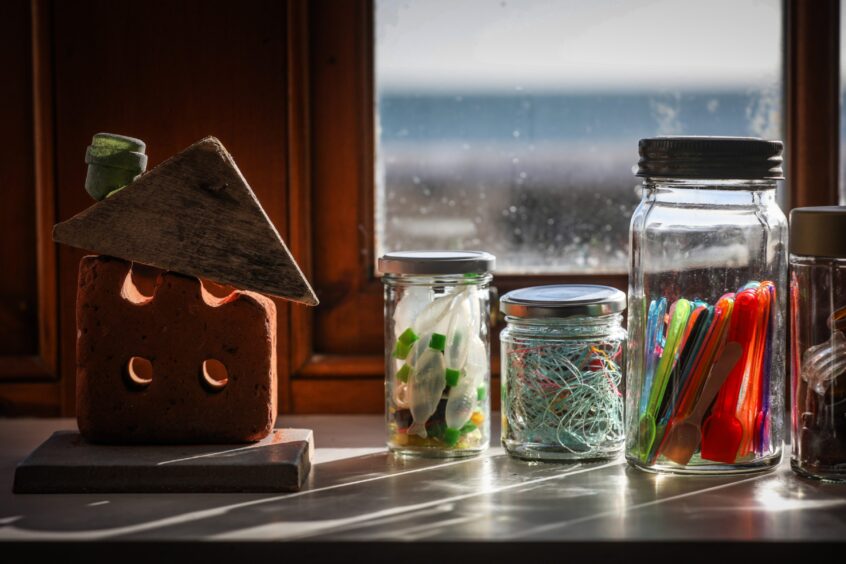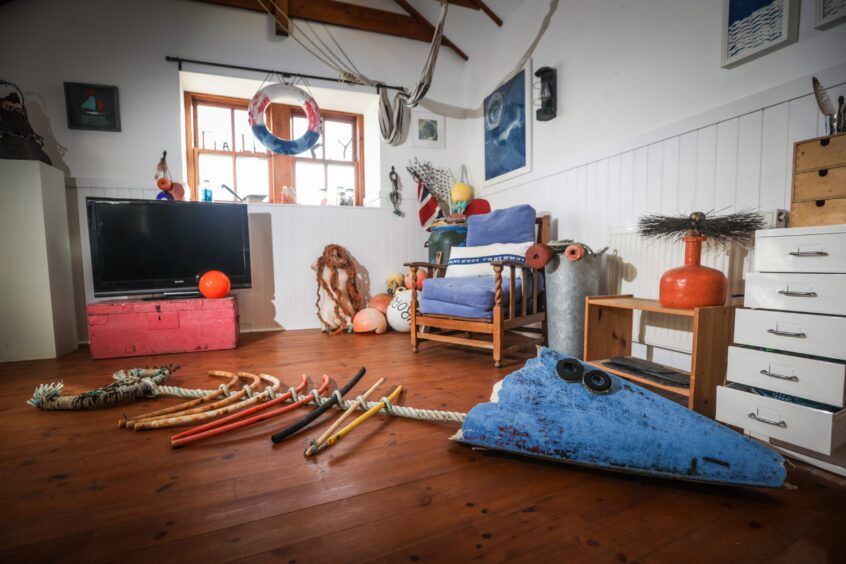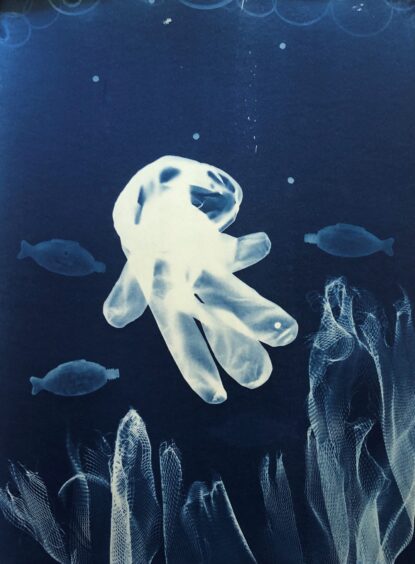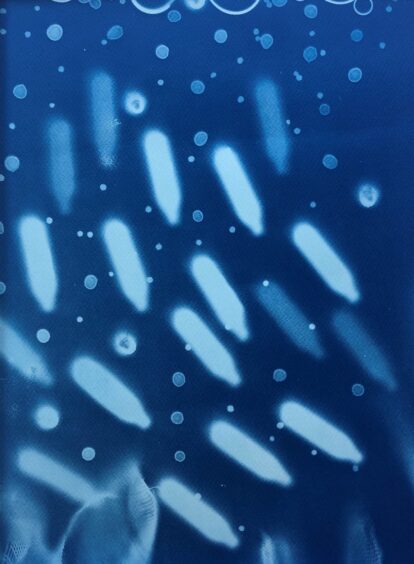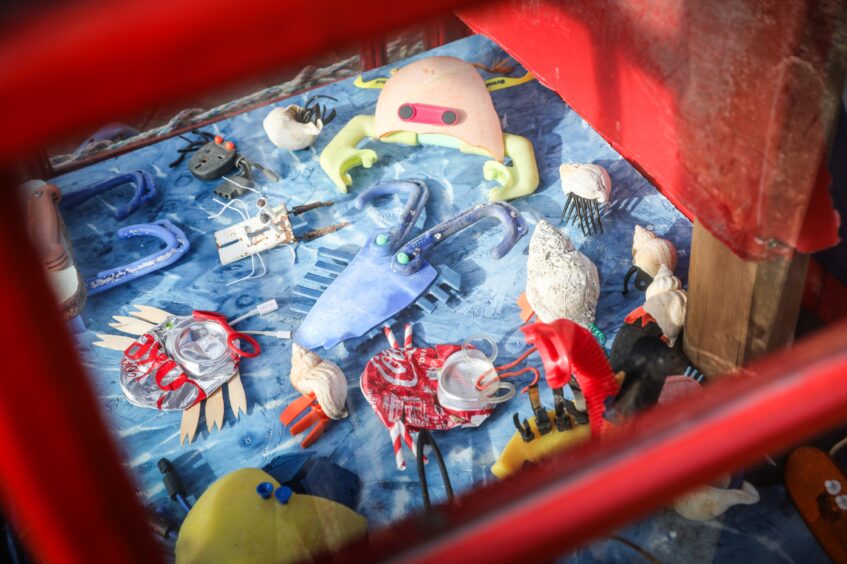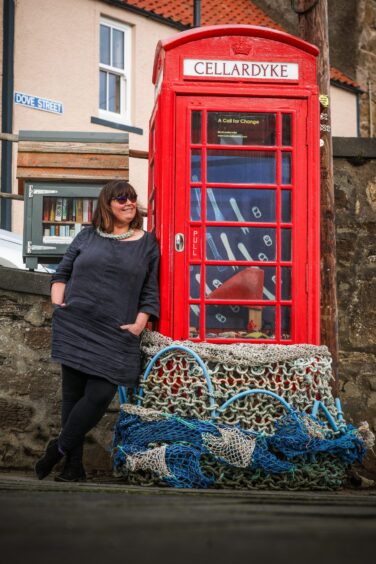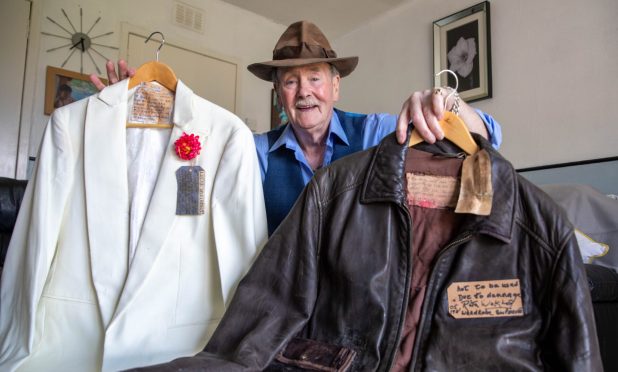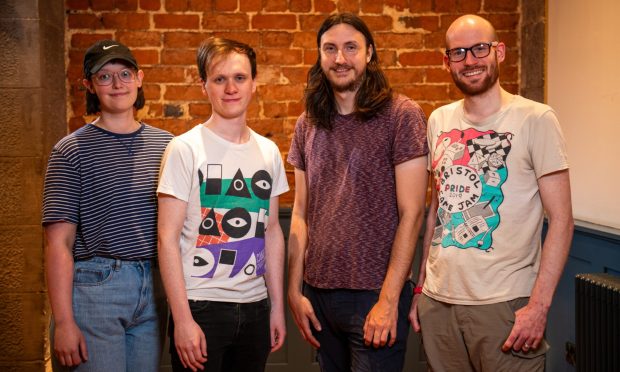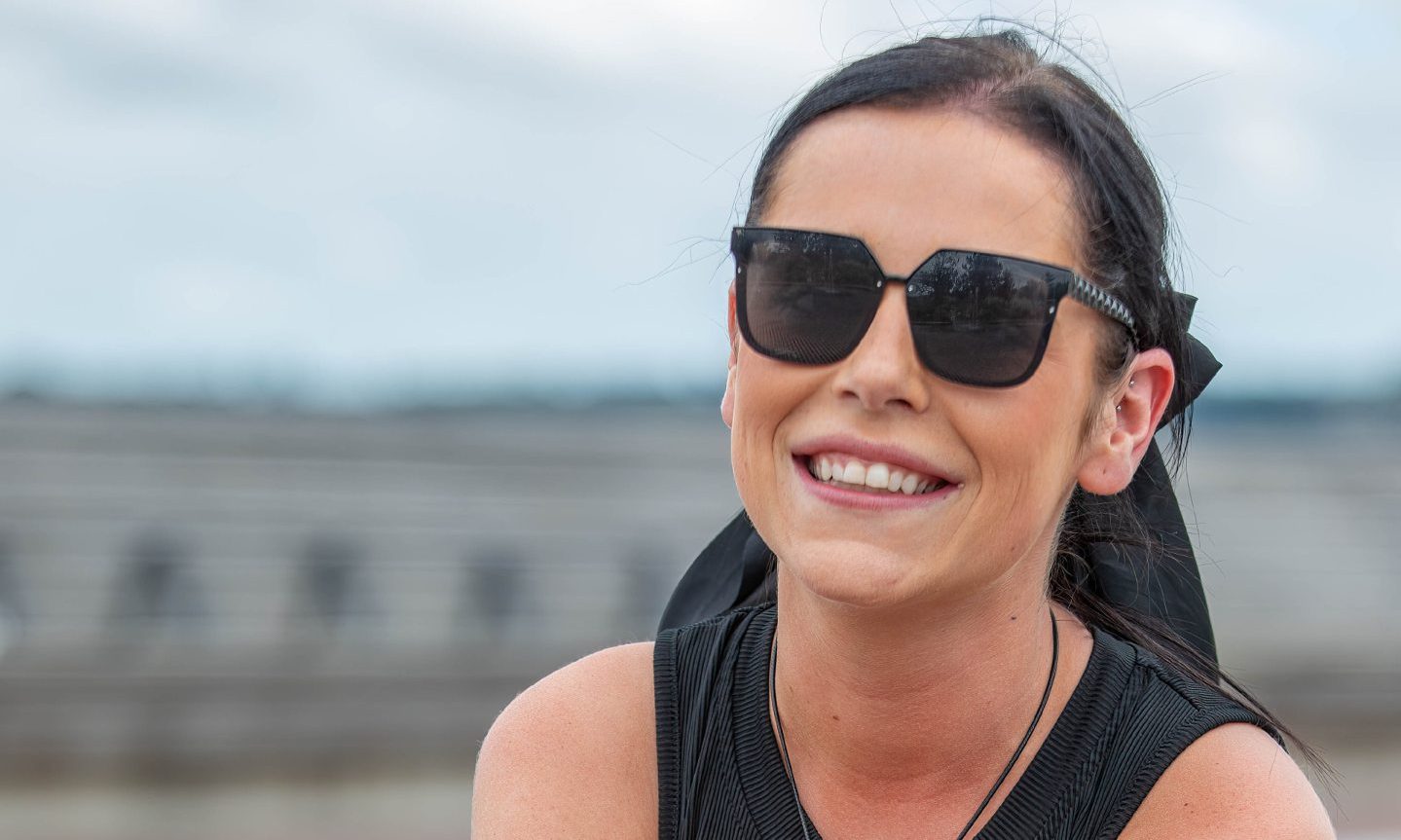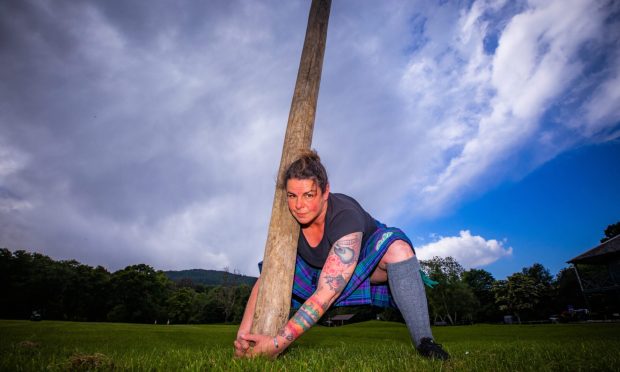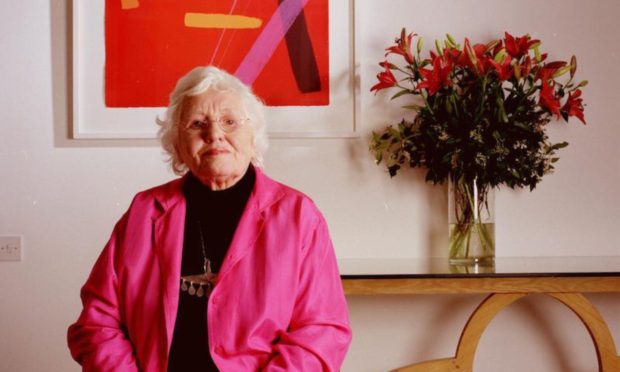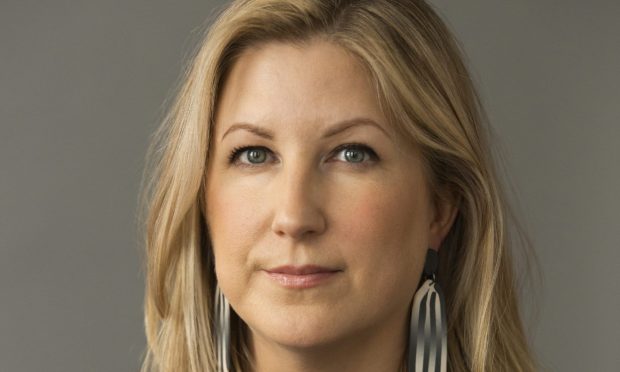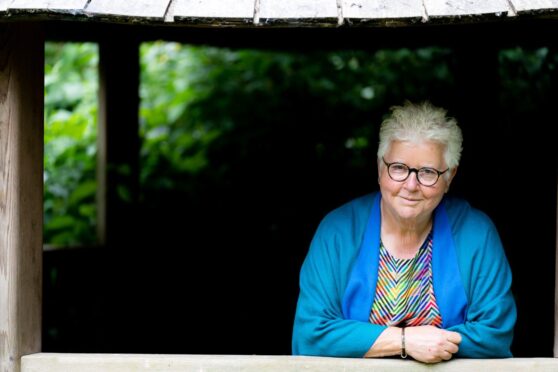Cat Coulter turns Fife beach finds into quirky pieces of art.
Her latest collection is on display in Cellardyke’s smallest art gallery and her work has previously been selected for exhibitions by Turner Prize-winning artists Tracey Emin and Grayson Perry.
Cat Coulter’s latest exhibition is conveniently situated a stone’s throw from her bright studio in the pretty East Neuk fishing village of Cellardyke.
When I visit on a sunny February morning the location seems idyllic, but just a few weeks previously, storm-force winds pushed gigantic waves ashore, crashing against the shutters, throwing rocks and other debris on to the streets and smashing the end of the pier.
Along with the rocks, seaweed and sand that naturally turns up after a storm, the Fife coast was also inundated with bits of rubbish, ghost fishing lines and broken creels. These, often brightly coloured, bits of flotsam and jetsam are the items that Cat picks up and takes home, where they are transformed into works of art.
“I’ve been making stuff and collecting stuff from the sea for as long as I can remember,” she says. “then, having this house, it was the perfect excuse to not only gather things, but make things out of what I found.”
As soon as she spots a bit of metal, driftwood or plastic, she is often hit by the idea of what it can become. “I think it’s the way my brain is wired,” she laughs. “Once I’ve seen what it is I can’t un-see it. There are lots of things which you think well, that looks like the head of a bird or something and you think, ‘I just need the feet to go with this now.’
“So I’ve got lots of bits which are just waiting for a body or a head!”
Creativity called Cellardyke artist Cat
Although she doesn’t have any formal training in art or design, “I wasn’t allowed to do art at school – I had to choose German!” she recalls, pointing out that “people don’t really train to pick up junk; unless you watched a lot of Blue Peter, and possibly the Wombles!”
Cat was making objects for friends and family to enjoy and says that people kept encouraging her to do something more with her work. “I finally did something about 2019 and then of course we went into the lockdowns and everything got tricky.
“So I started making cyanotypes out of the clear plastics, bottles and the particularly rubbishy rubbish.” As the pandemic progressed, she was horrified to find many more disposable gloves and facemasks on the beaches and decided to incorporate those into her work.
What is a cyanotype?
Cyanotypes are essentially the result of a very old photographic printing process. They can be achieved without a darkroom, using chemical washes and sunlight and produce distinctive prints in a striking shade of cyan blue.
“Those very disposable plastics work really well with cyanotype,” Cat explains, “because you have the light shining through them. You almost get an x-ray effect with the objects and I’ve enjoyed playing with that.”
The finished prints come out in beautiful shades of white and deep blues and have been very popular. “It’s a more attractive prospect, maybe,” she muses, “and you can do more abstract things with it and create bigger pictures.”
Her prints have been enthusiastically received by art lovers and have also caught the eye of some big names in the art world, including Tracey Emin who shortlisted two of Cat’s pieces for the Margate Art Prize, and Grayson Perry who chose Aquarius to appear in the Royal Academy Summer Exhibition in 2022.
A Call for Change
Cat Coulter’s current exhibition, A Call for Change, combines a cyanotype print with what she describes as “a menagerie of Rustaceans and Art-thropods, which have mutated and evolved from the plastic soup of the sea”.
The work is on display at Gallery 495 – a traditional red phone box which was purchased by the Cellardyke Trust community as a space to showcase art by local creatives. The installation includes items which have ended up on Cellardyke’s shores through littering, being flushed or abandoned, and many of the objects were washed up by Storm Babet.
Inside the tiny gallery space, a display of creatures created from discarded drinks cans, electrical fittings, plastic forks and fishing equipment come to life thanks to Cat’s imaginative placement. The back wall features a cyanotype printed on to aluminium, as a paper print wouldn’t survive the damp conditions in the phone box.
The whole installation is then wrapped in a wave of discarded rope which Cat painstakingly created from salvaged rope and lobster creel-ribs.
The artist admits that she has something of a love/hate relationship with the materials that she finds. “I do like the colours of the net and rope,” she admits. “They look lovely when they’re all neat and coiled in the harbour before they go out fishing. The are quite attractive things, but when they end up in bits, they just have to go because they are so damaging to the marine environment.”
Starting a conversation about ocean pollution
She hopes that the combination of the repurposed phone box – a public means of communication – with beach debris will help to encourage people to talk about the ever-increasing levels of pollution in our seas.
“The seascape is knitted from creel ropes, nets and ribs,” she explains. The materials pay homage to the local lobster-fishing industry, while the knitting is a nod to the local women who knitted traditional ganseys for the fishermen.
Knitting the ropes was no mean feat, she says. “A lot of the stuff that washes up is really difficult to remove. Picking up litter is not difficult but some things are incredibly heavy. You don’t ever find a nice long, straight piece of rope. It’s always tangled and impossible to unravel, as if some sort of psychotic kitten has been playing with it!” laughs the artist.
A labour of love
So the rope needs to be untangled and scrubbed clean before she can do anything with it. “I just use hot water, detergent and elbow grease. It’s very, very hard work,” she agrees, “but making the things is quite satisfying.”
The weight of the rope alone made knitting it something of a challenge. No ordinary knitting needles were going to be up to the job so she repurposed an extendable feather duster and an old broom handle. Once it was finished, she was at least sure that it would be able to stand up to the harsh conditions of a North Sea winter. “There is nothing quite as tenacious as fishing ropes,” she says.
A Call for Change by Cat Coulter is on display at Gallery 495 now.

